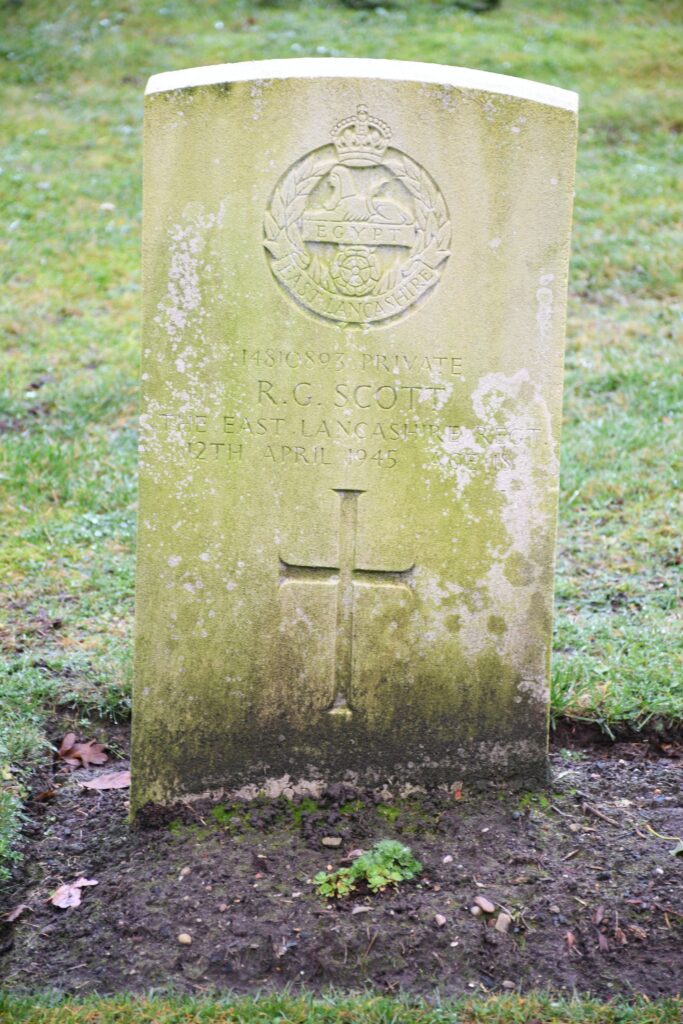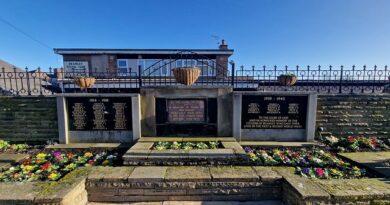Bramley (Rotherham) – War Memorial (Roy Geoffrey Scott)
Further to my post about the war memorial at Bramley, near to Rotherham.
The story of Roy Geoffrey Scott piqued my interest as he was a young casualty and he died very near to the end of the war. He was born on 6 July 1926, the son of Thomas Scott (1860s?-1930s?) and Mary Ann (nee Sadler) (1884-1978) who lived at 2 Bentley Road in Bramley. Roy joined the East Lancashire 1st Battalion as a Private, army number 14810893. Roy died on 12 April 1945 when crossing the River Aller and is buried at Becklingen War Cemetery (located between Hamburg and Hanover), one of 2,401 to be buried there.
One of three missing men from the battalion.
The Lancashire Infantry Museum notes that:
“From the Rhine to the Elbe At the end of March both Lancashire battalions crossed the Rhine and began the final advance across the North German Plain. 1st East Lancashires first took an active part in the battle for Bocholt, 28-29 March, then, like the South Lancashires, moved through the eastern border areas of Holland, mopping up enemy stragglers. German defences were based on water obstacles, and the East Lancashires then took part in fighting on the Ems-Weser Canal near Ibbenburen, 6th-7th April, and at the assault crossing of the River Aller on the 12th, with another heavy engagement at Kirchlinteln on the 16th, before occupying Hamburg on 4th May.”
Roy never made it to Hamburg, where he would have been one of the forces who took control of the city.
I asked Google Gemini for more information and it discovered:
“The River Aller, flowing through Lower Saxony, Germany, presented a significant obstacle to the Allied advance in the spring of 1945. Securing crossings over the Aller was crucial for maintaining momentum and preventing the Germans from establishing a defensive line along the river. The Battle of Rethem, fought from April 9th to 11th, exemplifies the strategic importance of the Aller . The small town of Rethem, with its bridge over the river, became a focal point for both sides. The British 53rd Welsh Division faced a determined defence by German forces, including the 2nd Marine Infantry, Eisenbahn-Flak units equipped with 128mm cannons, and SS troops . The initial British assaults on Rethem were repulsed, highlighting the strength of the German defences . However, the British eventually outmanoeuvred the Germans by crossing the Aller at Westen and flanking the defenders, forcing them to retreat . This victory allowed the British to establish a Bailey bridge at Rethem and continue their advance towards Hamburg.”
Roy’s gravestone in Germany. Every death is sad, but this is particularly poignant as Victory in Europe Day is 8 May 1945, less than a month after he died.




